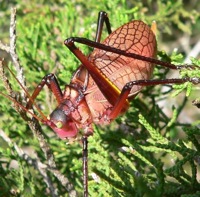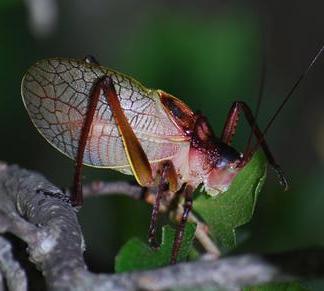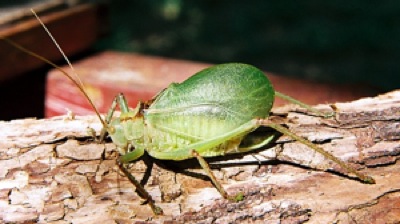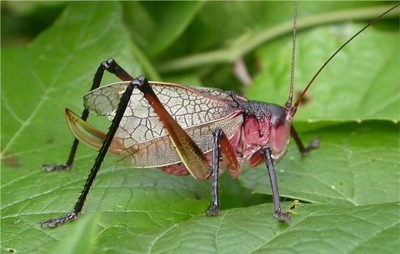 "Red Katydid" might sound like an entomological oxymoron but it’s a real critter…and that’s a bit easier to say than the Central Texas Leaf Katydid or Truncated True Katydid or Paracyrtophyllus robustus, all of which refer to the same thing.
"Red Katydid" might sound like an entomological oxymoron but it’s a real critter…and that’s a bit easier to say than the Central Texas Leaf Katydid or Truncated True Katydid or Paracyrtophyllus robustus, all of which refer to the same thing.
Moreover, they’ve made regional news recently because of an outbreak of the species west of San Antonio in Medina County and nearby areas. I hasten to add that this is not an invasive species from some distant continent. In fact it is a native species--actually an endemic Texas species like twist-leaf yucca or the Golden-cheeked Warbler--and this is a natural occurrence. Every few years or so, local populations of this katydid build up to what might be considered nuisance levels. This is not an uncommon phenomenon when certain insect populations are recovering in good years after a stretch of drought.
From a dietary standpoint, they tend to be oak eaters (even though the one in Lee Elliott's photo to the right is on a juniper). During such outbreaks, they can defoliate acres of trees. However troublesome that may sound initially, it is apparently a very transient phenomenon since the katydids die off nearly as quickly as they arose and then the oak trees heave a big sigh of releaf…ooooh, sorry about that…I mean a big sigh of relief, and then put on a fresh crop of foliage.

When I first heard about the Medina outbreak a few weeks ago, I emailed a request to staff and the various field researchers working on the Refuge to let me know of any sightings of this species in our area, thinking we could serve as an early warning for an outbreak that might occur here. Within hours, researcher David Morgan sent me a picture of a nice pink katydid and said, “They’re all over the trees at the Flying X and on the Rodgers tract.” So much for early warning. Happily, they have not defoliated us quite yet. [Update: July 8, 2010. Thanks to everyone for notifying me that you are seeing these katydids. I have all the reports I need; no more messages or forwarded pictures are needed!]
The most intriguing thing about this particular katydid is that it occurs in basically two color forms:

In a regular year in normal numbers, these ‘dids are green like so many of their Tettigoniidae brethren*. (That’s the family of true katydids--I just felt like showing off.) However, when populations build up to these outbreak levels, the predominant color morph is pink or red:

I haven’t delved into the scientific literature to learn why or how this happens, but like so many other growth issues, it probably has something to do with hormones and diet. I’m just guessing.
You can learn a lot more about this katydid on one of Mike Quinn’s excellent invertebrate web pages here. A recent news article on the event in the southern Edwards Plateau can be found in the June 7th issue of the AgriLife News from the Texas AgriLife Extension Service.
* * * * *
Below the Line:
* In an attempt to be politically correct, I tried to find a neutral or feminine equivalent of the word brethren. But, alas, I find nothing other than "sisterhood" or "kinfolk". Actually, "katydid kinfolk" sort of has a nice homey ring to it, don't you think? Sounds like my ancestors back in the hollers of Kentucky.
